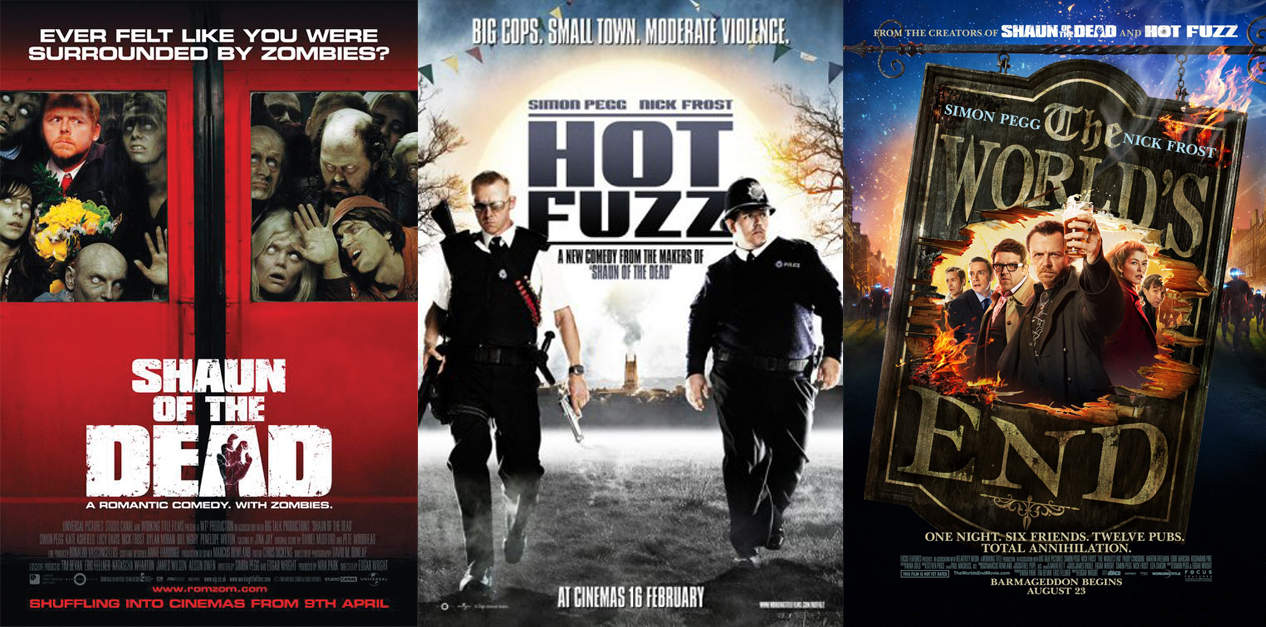The Cornetto trilogy comprises three genre-mashing films by British director Edgar Wright: Shaun of the Dead, Hot Fuzz, and The World’s End. The trilogy’s name comes from the fact that there is a throwaway reference in each film to different flavours of the eponymous ice cream treat. Each film takes on a specific genre and pays homage to certain films or tropes in the genre. What makes these films special is the fact that one can clearly see the love that the filmmakers have for the genre source material and the understanding they have of that material. Collectively, these films have set a high bar for genre parodying.
The first of the Cornetto films, Shaun of the Dead — its title referencing George A. Romero’s Dawn of the Dead — is a parody of the zombie film genre; hence the reference to a red Cornetto. The film showcased Wrights talent for frenetically paced, adrenaline-pumping, insightful films that deconstruct a genre while becoming great genre films in their own right.
Hot Fuzz, my personal favorite of the three, references action cinema and police procedurals and is symbolized by the blue Cornetto. The film manages to make several direct references to the 1991 action film Point Break, one of the more testosterone-filled movies of the 90s. In this film, Wright succeeds on many levels. He manages to parody key moments found in action films, such as the walking away from an explosion without turning back, while creating a thrilling and entertaining action thriller.
The World’s End, with its green Cornetto, is a blatant homage to the alien invasion/body snatchers genre. It is a successful entry that explored more mature themes than the previous two films. While feeling similar to the previous two there was a definite, evolution in tone.
Current films such as Zombieland or Warm Bodies undoubtedly owe a great deal to the Wright’s Cornetto trilogy. There are arguably no other contemporary comedy films that have achieved the quality of these films (yes, even Attack of the Block). There is something of a cultural consensus, amongst both critics and audiences, that the trilogy is not only entertaining but of great quality. Critics give the films high ratings and the box office numbers of the films have been good. A film trilogy that manages to unite these two markers of success is rare indeed. They have also, to a certain degree, rejuvenated their respective genres and reinforced their cultural relevancy.


